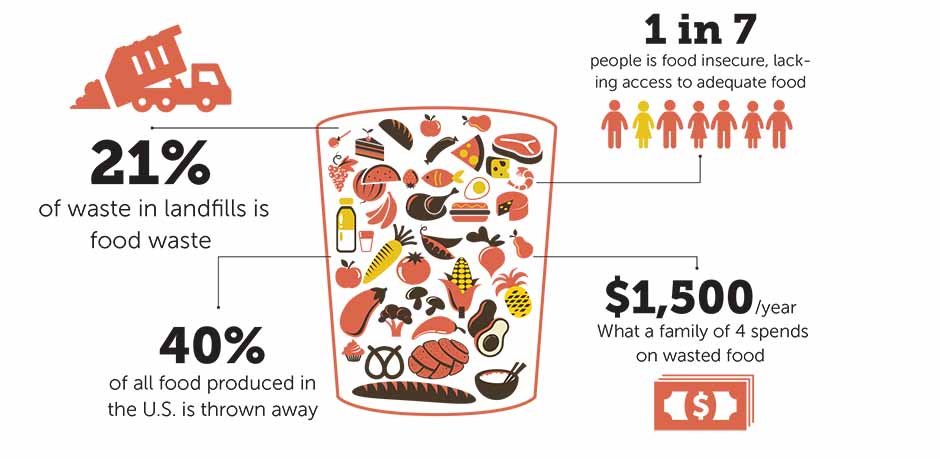The numbers are shocking: 40 percent of all food produced in the U.S. is thrown away, half of which happens at home. One in seven Americans is food insecure, meaning they either don’t have enough to eat or don’t know where their next meal is coming from. Is anything being done to counter this? The answer is yes. Virginia Till, a recycling specialist in the Environmental Protection Agency (EPA) Region 8 Environmental Stewardship Unit, shares more.
One of EPA’s programs concerns sustainable management of food. Tell us about that.
In 2011, EPA launched the Food Recovery Challenge to encourage grocers, universities, stadiums and hospitality businesses to reduce food waste generated, donate excess food and compost food scraps. In 2014, participants reduced wasted food by 606,000 tons. Of this, 88,600 tons was donated to feed people. Nearly 800 organizations nationwide are participating, including Disneyland, MGM Resorts International and the National Hockey League. This past September, EPA and the U.S. Department of Agriculture set a national target to reduce food waste going to U.S. landfills by 50 percent by 2030 via various sustainable food management efforts.
What are the biggest impacts of food waste?
Wasting food harms our neighbors, our planet and our wallets. Think of all the resources that go into producing food: the hard work of farmers, water and land use, transportation costs—all wasted when we throw out the apple that rotted in our fridge. Then consider that 21 percent of waste in landfills is food, where it produces methane, a greenhouse gas with 20-plus times the potential climate change impact of C02. Now consider the fact that 48 million Americans, including 16 million children, live in food-insecure households with inadequate access to affordable food, and a family of four wastes about $1,500 a year on food that ends up in the trash.
What can individuals do to help prevent food waste?
First, be a smart shopper. Shop your fridge first: Cook or eat what you already have before buying more. Then before your next shopping trip, make a list with meals in mind and buy only what you need. Eat what you buy: Take leftovers for lunch or incorporate leftovers into a future meal, such as frittatas, soups or casseroles. Reuse food scraps in broths. Store food properly: Keep fruits and vegetables fresh with proper food-storage techniques (visit stilltasty.com for tips). Compost: Recycle food scraps into compost that feeds your yard and plants. And—probably most importantly—talk to your friends, your employer, local businesses and faith-based groups and ask, “How can we save this edible food?” Let’s all commit to being food savers.
For more on sustainable management of food, visit epa.gov/foodrecovery.

